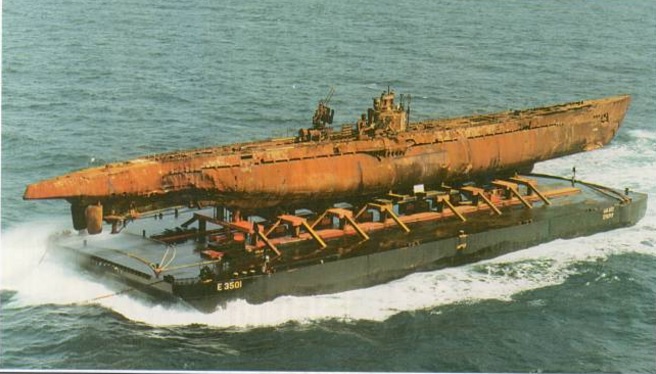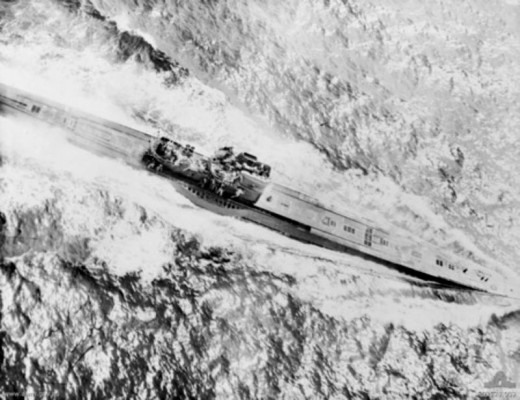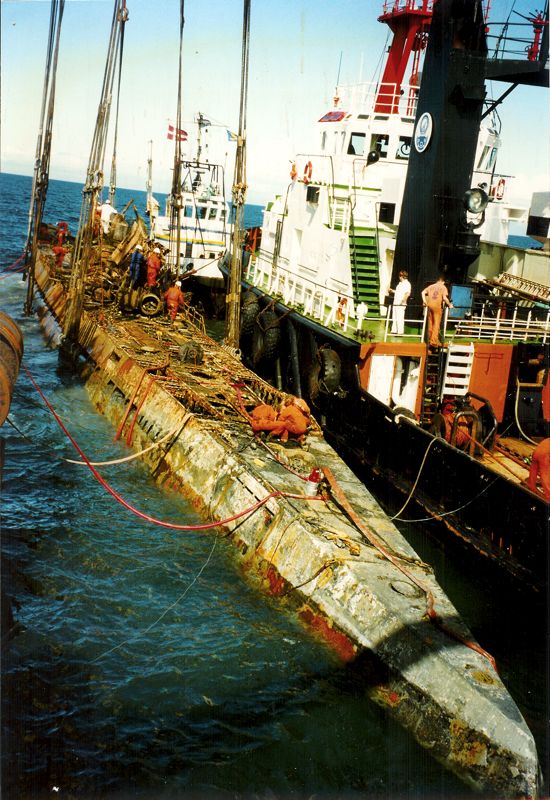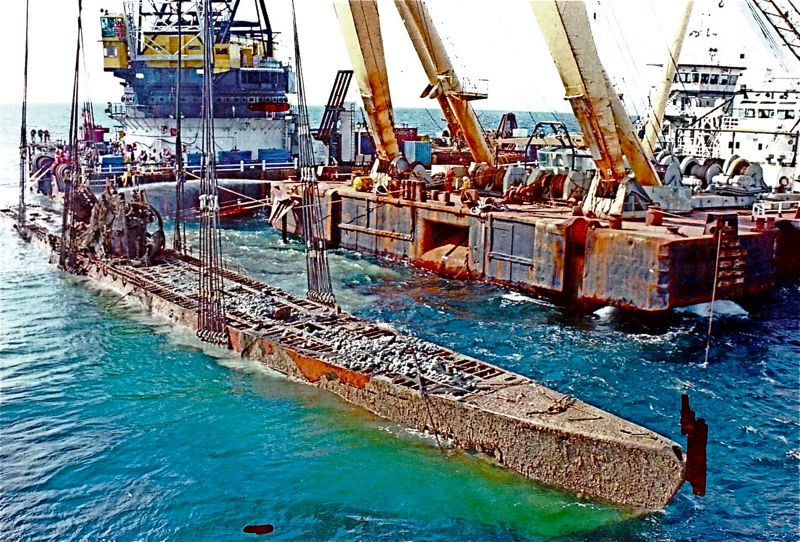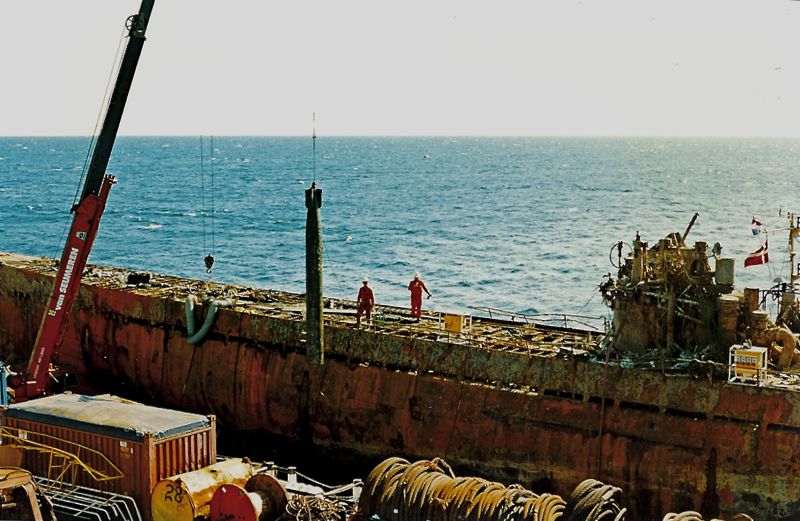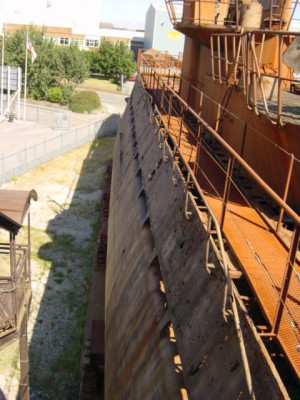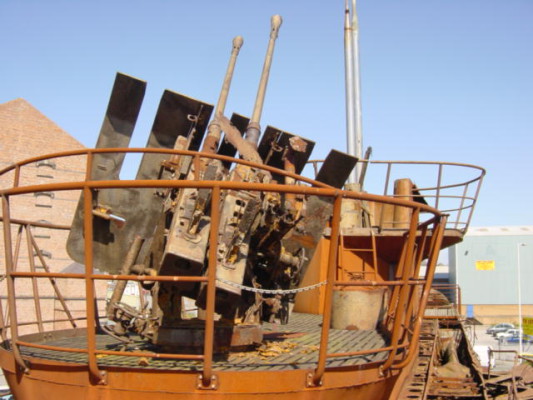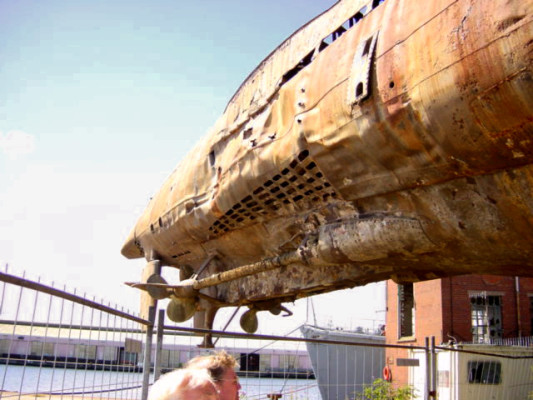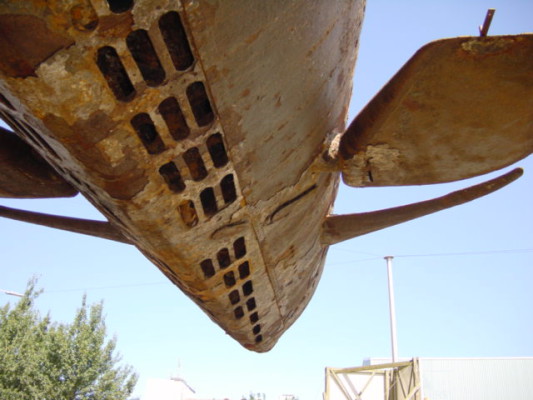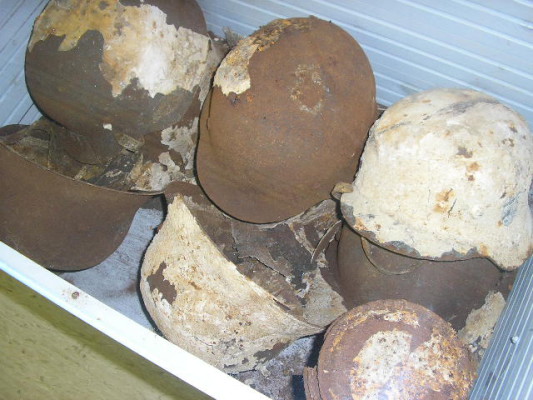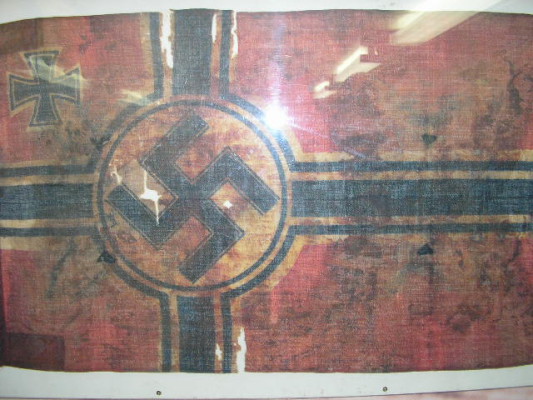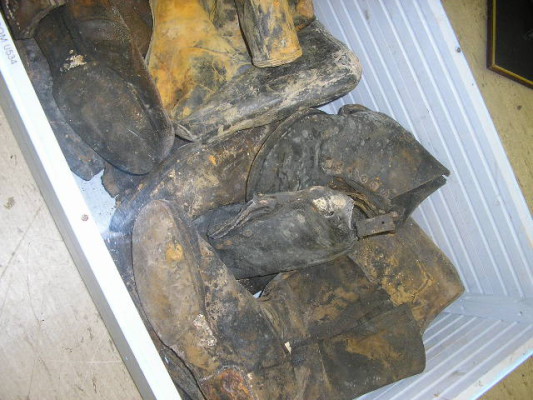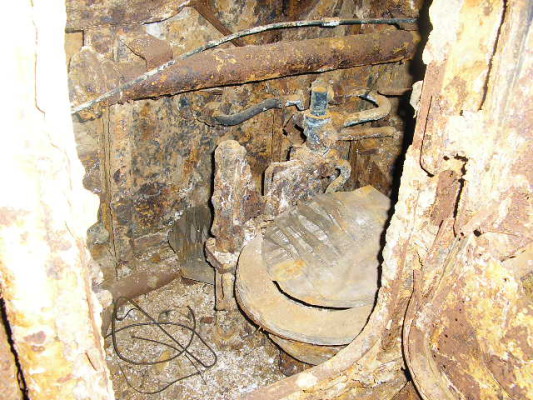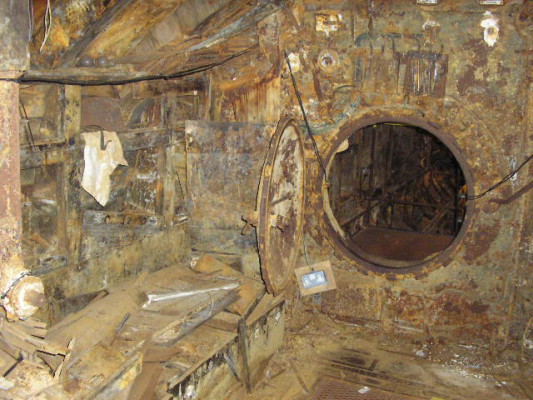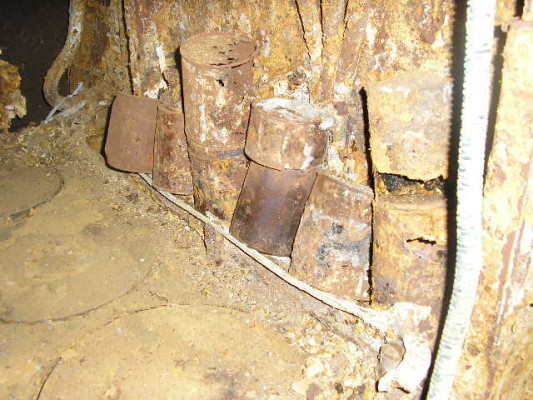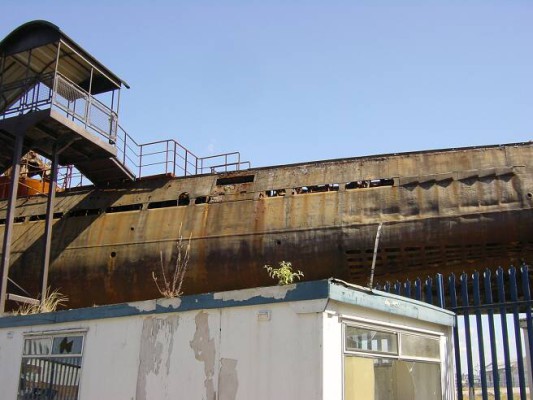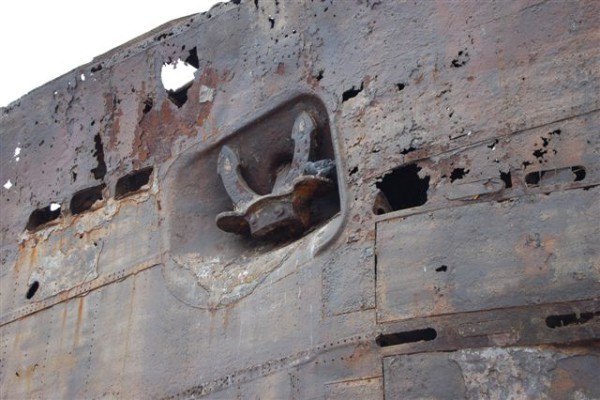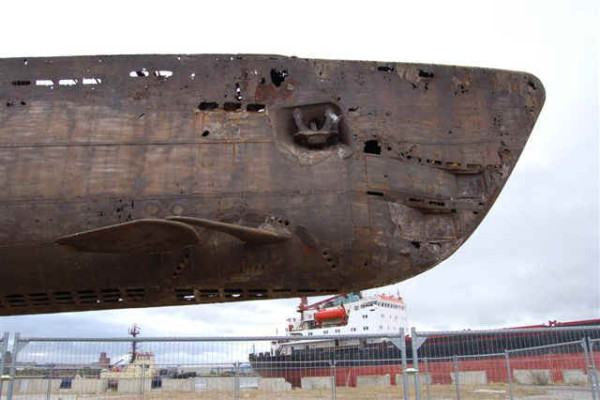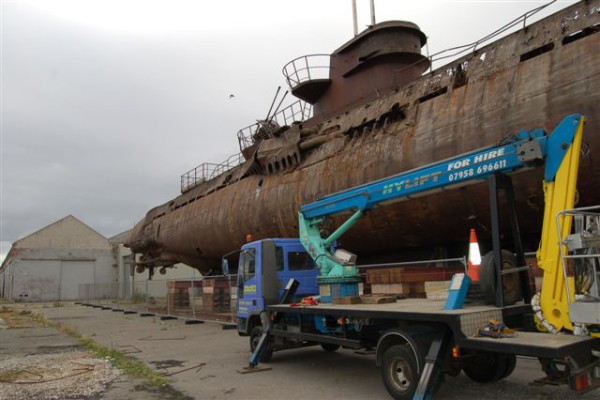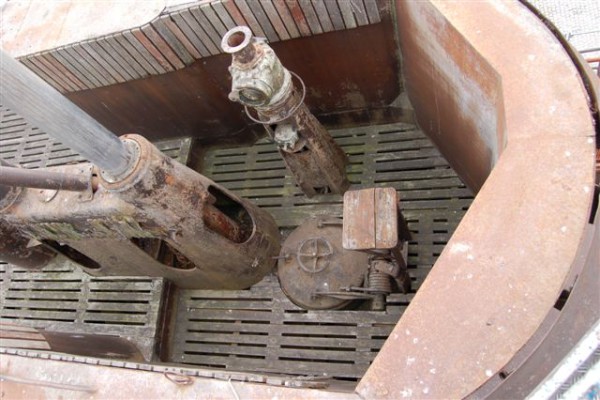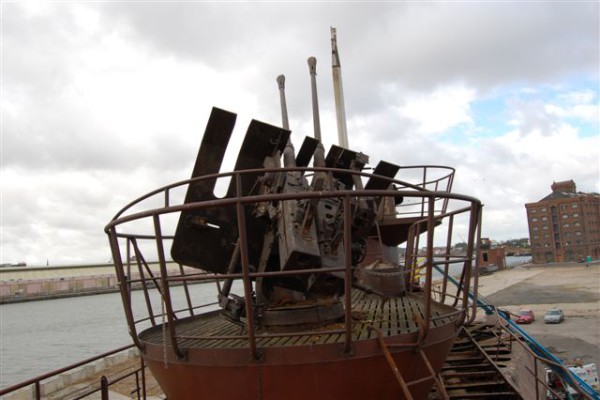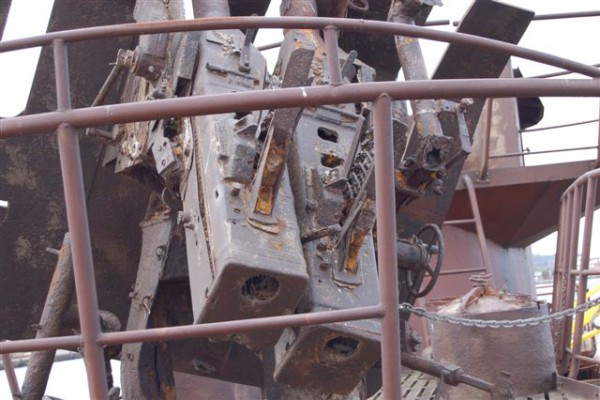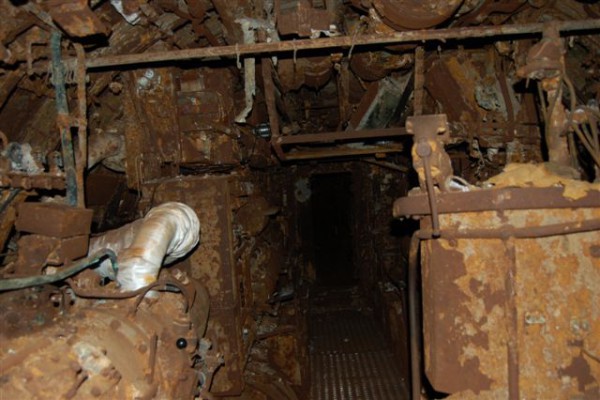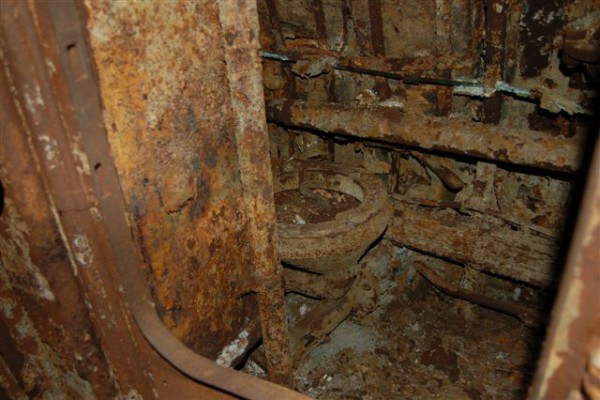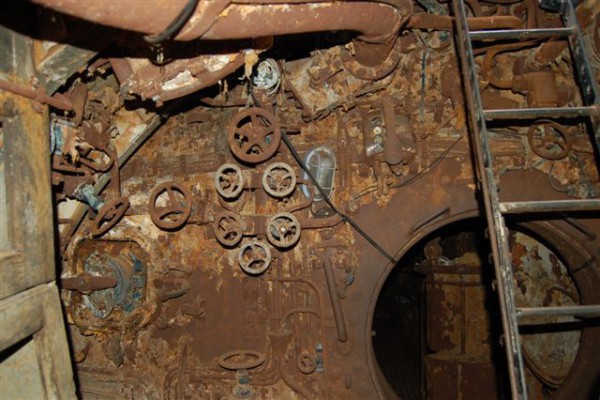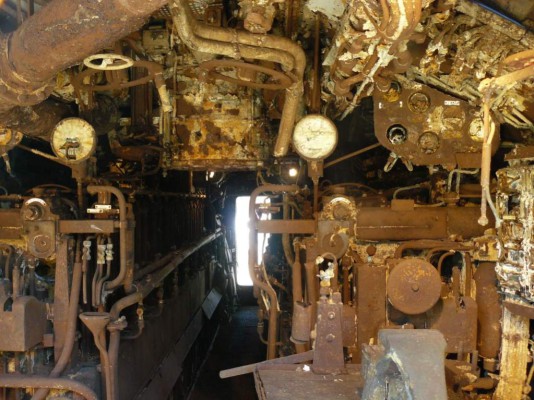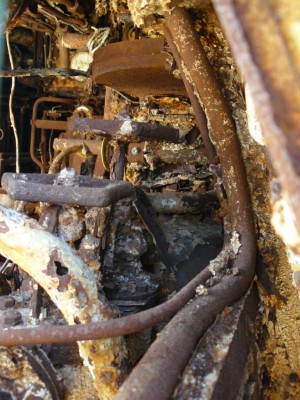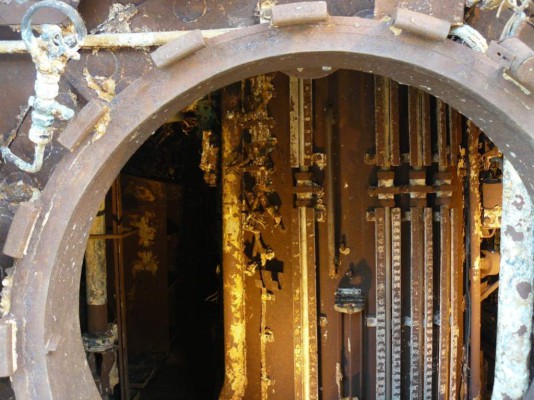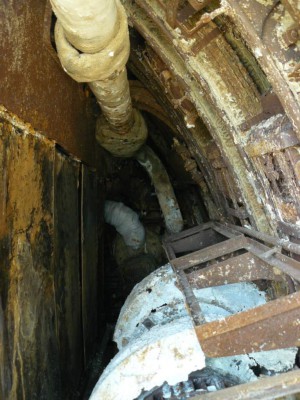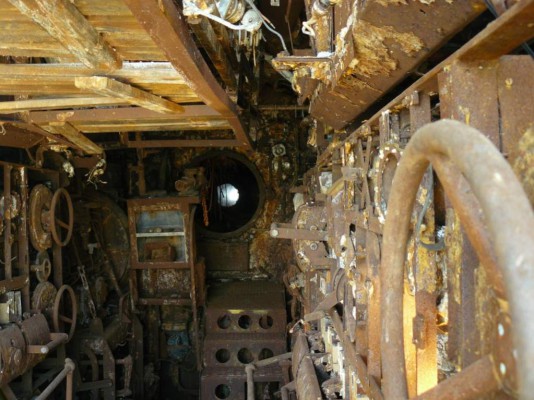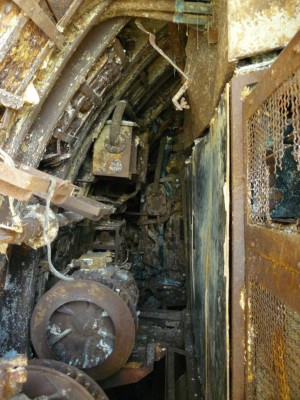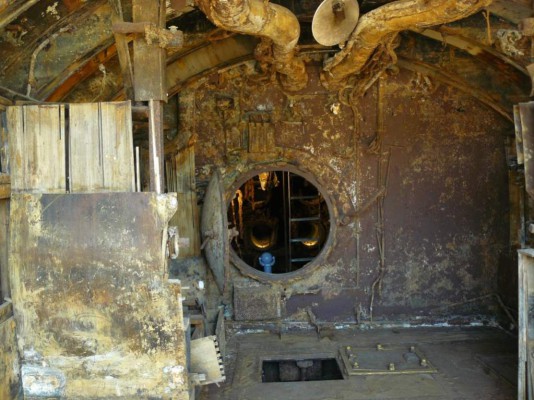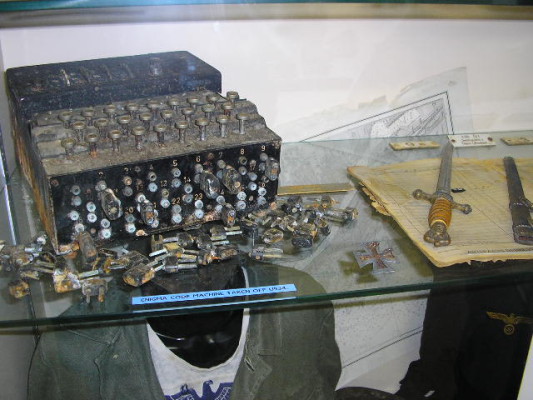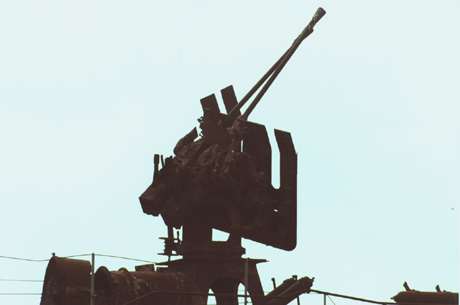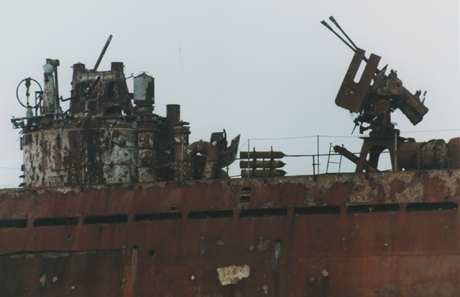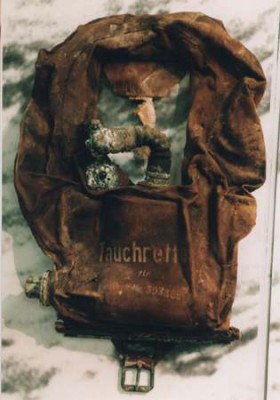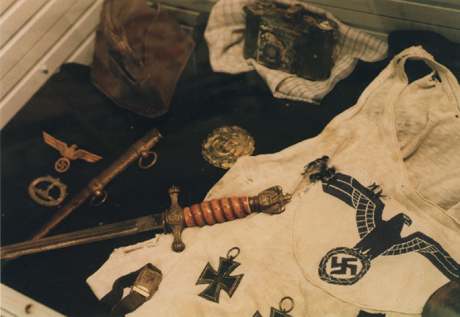Some great images of U-534, the wreck and the artefacts which include an enigma machine.
Commissioned in Hamburg in late 1942, the U 534 is a Type IX C 40 long-range ocean going submarine. She was mainly used as a weapons testing platform, and until the late summer of 1944 was also used as a weather ship in the North Atlantic. During the autumn of that year she left the massive U. boat pens at Bordeaux and sailed back to Germany where she was laid up in Kiel. So far nothing out of the ordinary, just another U. boat. But during May 1945 things changed.
U534 on the Barge
Germany unconditionally surrendered, and the War was over. However just before the surrender, on May 2nd, U. 534 became the last submarine to leave Germany. Apparently she had been specially provisioned and armed in the bombproof pens at Kiel weeks before, and at the appointed hour she slid silently out of the submarine pens and made her way towards Kristiansand in Norway. Two days later, on May 4th, Admiral Doenitz had ordered all submarines still at sea to surrender, but by then U 534 was lying submerged off Elsinore in Denmark. Weather her Commander, Captain Nollau failed to receive the order or chose to ignore it is uncertain, but either way, the outcome was to be catastrophic. Images via Scroll down to page 3 for video
On May 5th, the day after all German forces in Northern Europe surrendered, a R.A.F. Liberator from Coastal Command sank U 534 off the Danish Island of Anholt. Most of the crew managed to abandon the boat and were soon rescued, but five were trapped inside the U-boat and were dragged down by it.
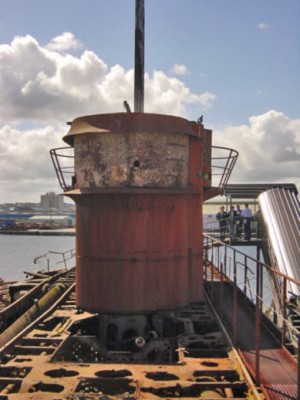
Miraculously they managed to escape their iron tomb, but one died in the ascent, and two others drowned on the surface before the rescue ships could get to them. So where was the submarine going and what was its mission?
Anti Aircraft guns still intact
U 534 had a range of over eleven hundred miles, so could have easily reached South America. Was she going to carry a leading Nazi to South America via Norway? Or was she carrying treasure looted from the occupied countries to help those Nazi who had already escaped to South America by other routes? One of the crew that died shortly after the U534 sank was an Argentine wireless operator, which suggests that she was indeed en route to South America. The only person who definitely knew was Captain Nollau and he never told, taking the secret to his grave.
At least the Props are Shiny
As the years rolled on, the rumours became more persistent and the accounts of the treasures supposed to be on board ever more extravagant. More than forty years after she sank a Danish diver, called Age Jensen found U 534 and once again the rumours started to fly. In 1992 a Danish publisher, Karsten Ree became interested in the submarine and decided to mount a salvage operation to find out once and for all what the Mystery of the U 534 was all about. The expensive lifting operation lasted over four weeks with the close co-operation of the Dutch Navy. After five tons of explosives were removed the submarine was moved to Grenaa where she was loaded onto a huge barge and towed to Birkenhead. Besides the explosives there was about two tons of documents. No gold. No paintings and no jewels. Source: www.submerged.co.uk
One plausible explanation for U-534 ’ s refusal to surrender lies in the discovery of three experimental T11 torpedoes found in the aft section of the vessel. Only 38 of this type were built, and they were unique in that they had acoustic homing systems which were developed as a countermeasure to the British Foxer decoy system.
The vessel’s commander, Kapitänleutnant Herbert Nollau, committed suicide in 1968.
Salvage
U-534 lay on the sea bed for nearly 41 years until she was found in 1986 by the Danish wreck hunter Aage Jensen. Shortly after the leader of the owners group presented the idea to Danish media millionaire Karsten Ree who then sponsored the raising of the submarine amid rumours of Nazi gold and intense media coverage. Hopes of gold treasure proved unfounded, as the ship contained nothing extraordinary. She was raised to the surface by Dutch salvage company Smit Tak on 23 August 1993.
Museum ship
Transported to Birkenhead, England, in 1996, the vessel formed part of the Warship Preservation Trust’s collection at Birkenhead Docks until the museum closed on 5 February 2006. On 27 June 2007, the Mersey travel transit authority announced that it had acquired the submarine to display at the Woodside Ferry Terminal.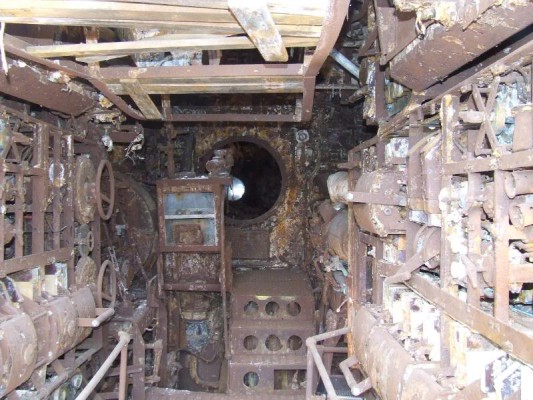
For technical reasons and to facilitate economical transportation to its new site, the vessel was cut into five sections, two of which were subsequently re-joined. It is now displayed in sectioned form to allow visitors better visibility without entering the U-boat. Merseytravel said that preserving the hull intact would have created prohibitive transport costs. Engineers began a month-long operation to cut up U-534, using a diamond wire cutter, on 6 February 2008. Beginning on 10 March 2008, the sections, each weighing up to 240 tonnes, were transported by floating crane over several days.
The U-Boat Story exhibition opened on 10 February 2009.
